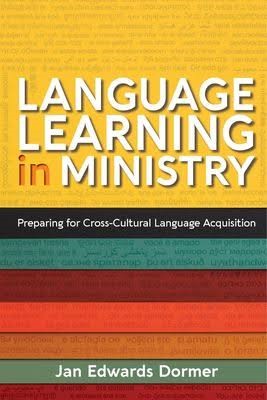
By Jan Edwards Dormer
Language Learning in Ministry: Preparing for Cross-Cultural Language Acquisition. William Carey Publishing, 2021. 164 pages. US$12.99
This review was originally published in Evangelical Missions Quarterly, January–March, 2022: 56.
When I began studying French in 1988 at the Université de Nancy, I had no idea how challenging it would be. I will never forget an American studying with me who walked into the cafeteria to order a meal and announced he wanted a chicken breast (sein de poulet). All the counter workers had a good laugh. I also laughed although I was oblivious to the nature of the fault. Who would have known that the French speak modestly of chicken chest (poitrine de poulet)? From language gaffes to cultural blunders, much must be learned and experienced firsthand on the ground.
Jan Dormer has provided a great service for language learners. Her goal is to “provide more effective opportunities for language acquisition and better equip missionaries-in-training with an understanding of how additional languages are acquired” (xi). She largely succeeds in working through issues that every prospective language learner should take to heart. She covers misconceptions and principles of language acquisition, and differences between formal and informal language learning, rightly insisting that “every language learner will need to continue to learn the language after formal studies have ended” (56). Her chapter on “Opportunities for Ministry amid Language” encourages language learners to see that “the language learning phase does not have to be an emotional or ministerial desert.” (90). Her charts and appendices are rich resources for assessing language goals, progress, and children’s needs. She provides materials and online links for teaching English and further study.
Dormer’s experience of how her parents learned languages leads to some skepticism about language aptitude tests (8). I would agree that people are gifted differently and that aptitude tests are limited in value. My experience leads me to consider testing a tool among others that might be beneficial before one launches into the mission endeavor. Neither do I share her opinion that pronunciation “isn’t as big a deal as some have made it to be” (11). Some of that depends on the context. Some places of ministry are far more forgiving and welcoming than others. Her assertion that “everyone can learn a new language” (12) should take into consideration the fact that many people never learn a language well enough to use it beyond rudimentary purposes. There are different levels of competency needed for shopping and preaching. True, “native-like language production is simply not necessary” (63). For most individuals, after a certain age, it is also not possible.
These observations do not detract one whit from the value of this book. Dormer’s book fills a great need and is a welcome addition to the literature on language acquisition. She hits the right notes in treating language proficiency as the work of a lifetime. A book like this would have helped me prepare for the pitfalls, frustrations, and disappointments associated with language acquisition. My advice: Do not leave for the mission field before reading this book. If you are already engaged in language studies and feel overwhelmed, this book will help with new and reassuring perspectives.
For Further Reading:
Kirby, Jon P. “Language and Culture Learning Is Conversion . . . Is Ministry.” Missiology 23 (1995) 131–43.
Larson, Donald N. “Linguistic and Sociolinguistic Factors in Missionary Allocation.” Evangelical Missions Quarterly 9 (1973) 74–84.
Smalley, William. “Missionary Language Learning in a World Hierarchy of Languages.” Missiology 22 (1994) 481–88.